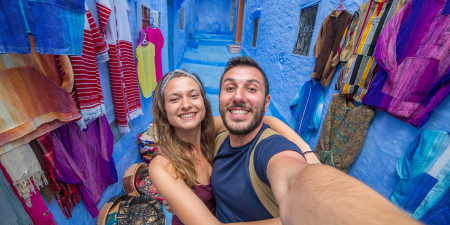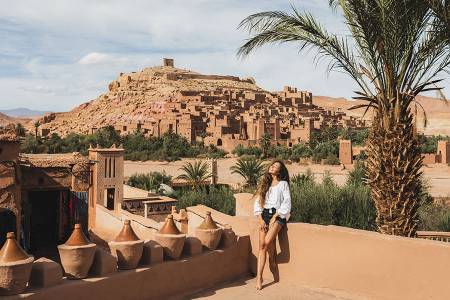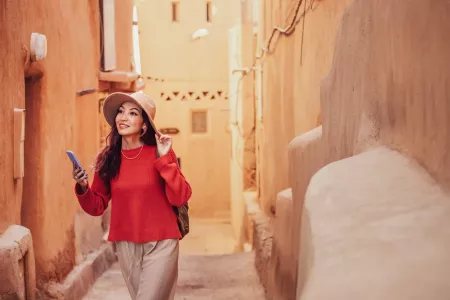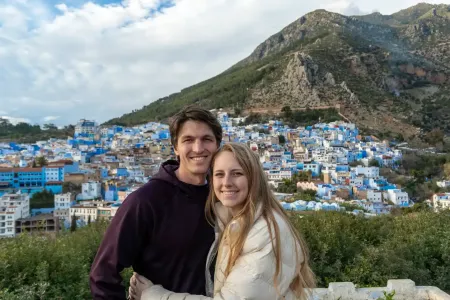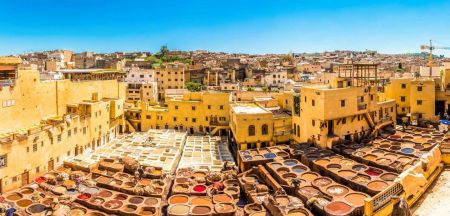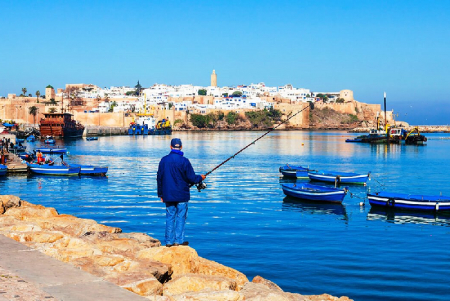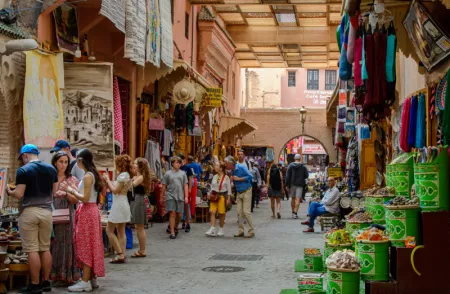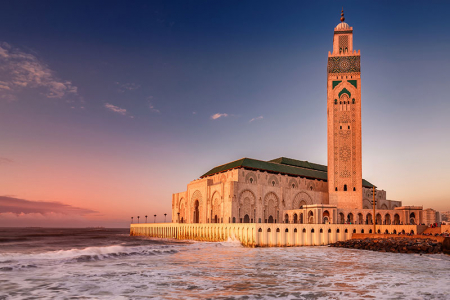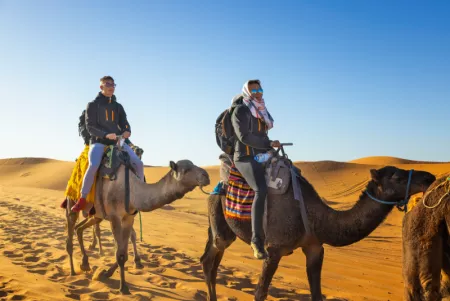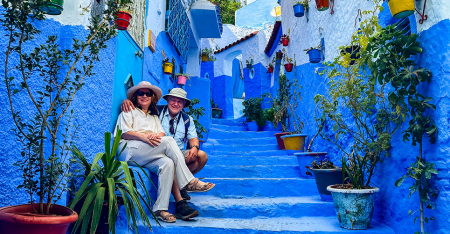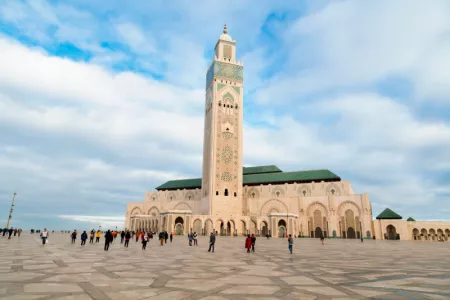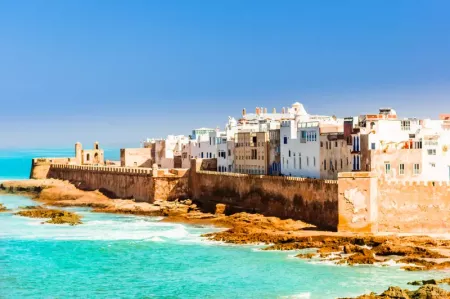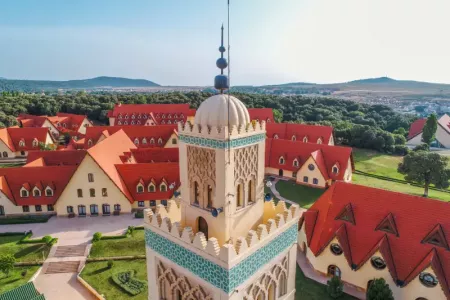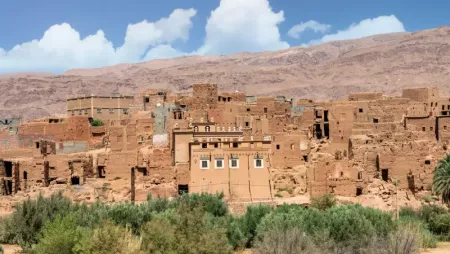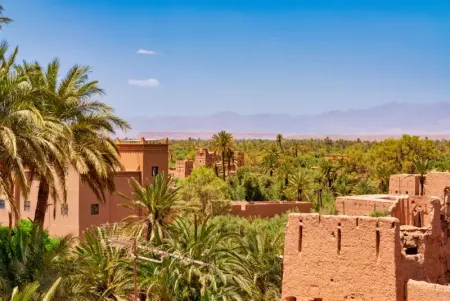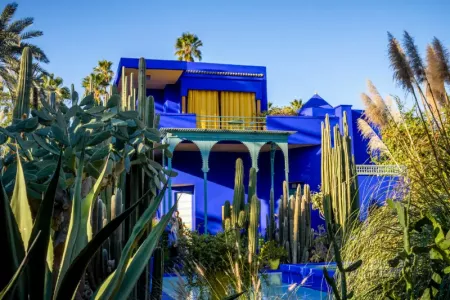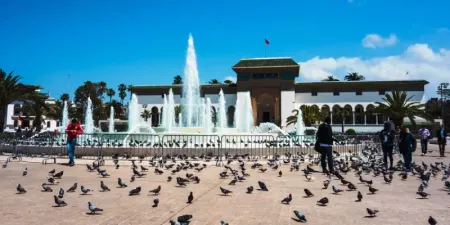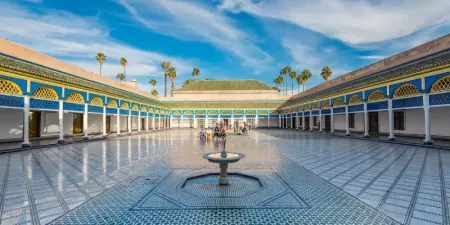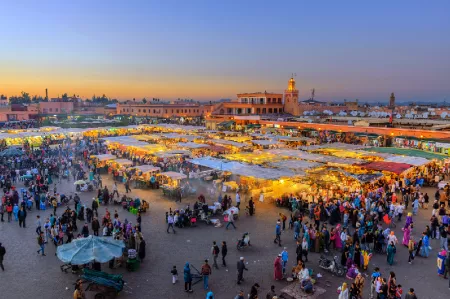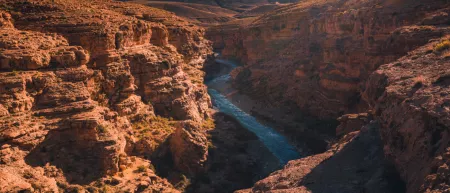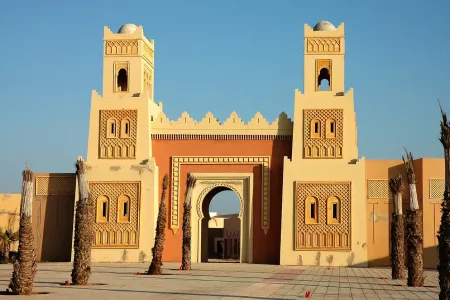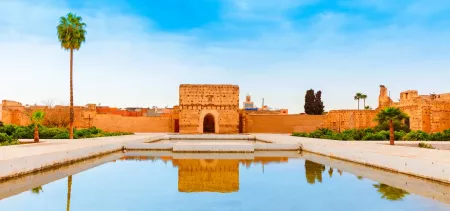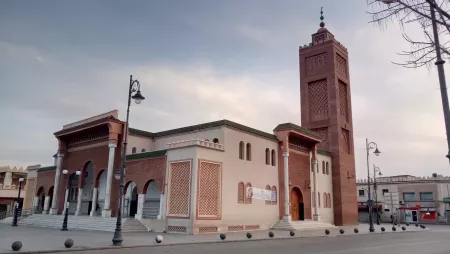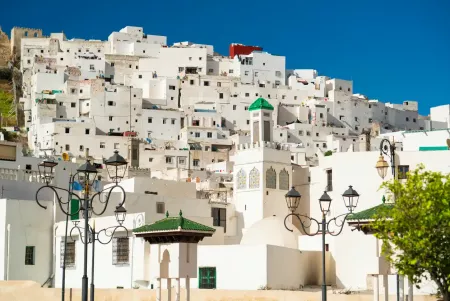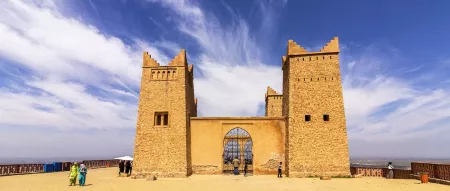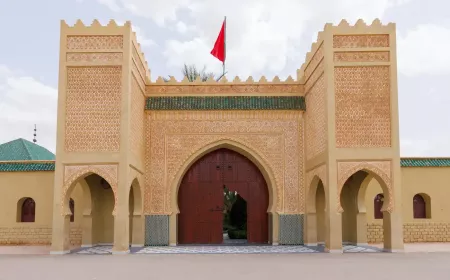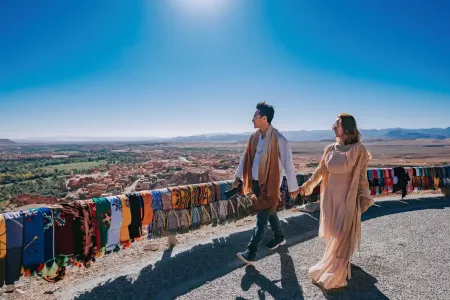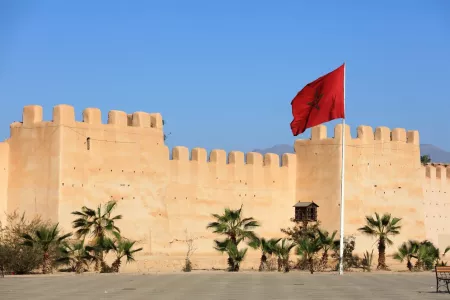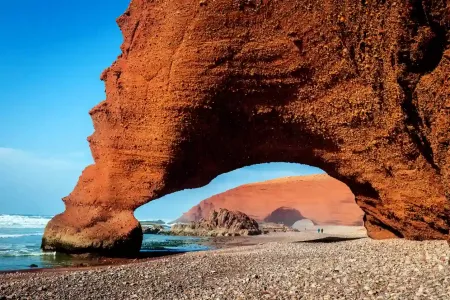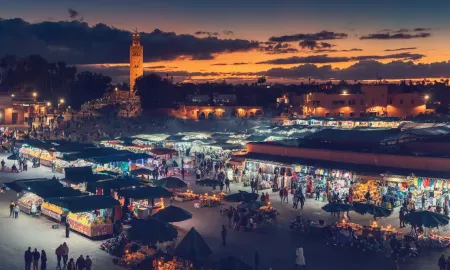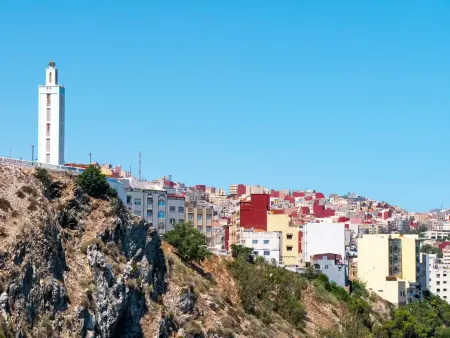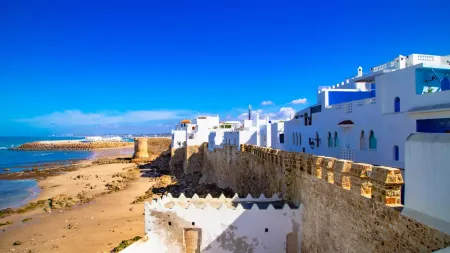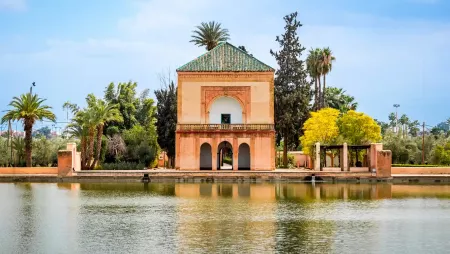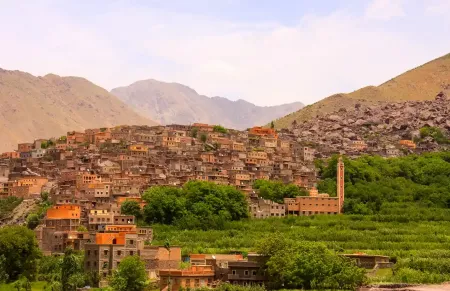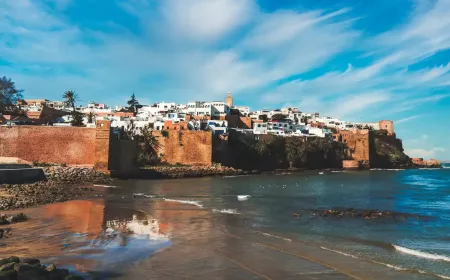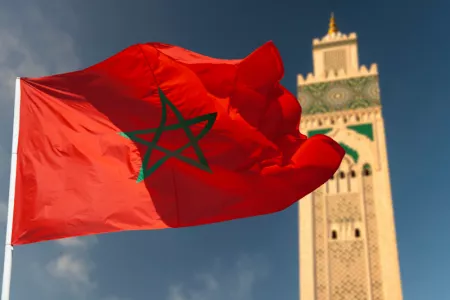Discover Azrou: Your Essential Guide to Morocco's Mountain Paradise
Azrou, in the Middle Atlas, is one of Morocco’s most charming highland towns. Known as Azrou, Morocco, it blends natural beauty with Berber heritage, from cedar forests and endangered Barbary macaques to unique red-tiled architecture. Travelers can explore the vibrant Tuesday souk, hike through cedar groves, fish in mountain streams, or visit historic landmarks like Toumliline Monastery. With cool summers, snowy winters, and authentic cultural experiences, there are countless things to do in Azrou for nature lovers, history enthusiasts, and adventure seekers alike.
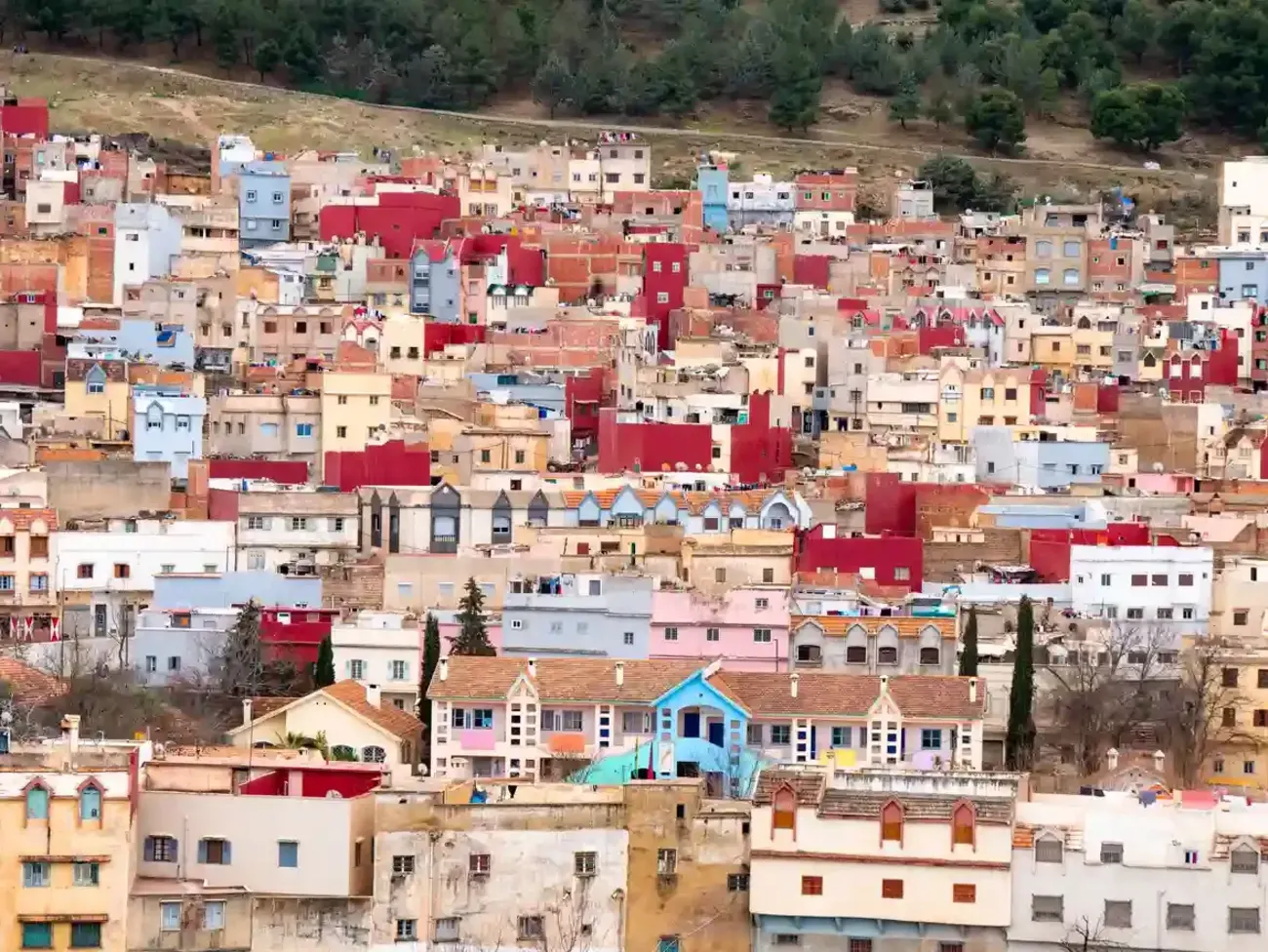
Perched dramatically within the Middle Atlas Mountains at 3,950 feet above sea level, Azrou emerges as Morocco's most intriguing highland sanctuary. This remarkable settlement derives its identity from the Berber word meaning "rock," a fitting tribute to the imposing stone formation that defines the town's western frontier.
What immediately captures the eye here defies typical Moroccan expectations. Azrou presents a fascinating architectural tapestry featuring European-influenced buildings crowned with distinctive red-tiled roofs, ingeniously crafted to bear the weight of winter's heavy snow blankets. Home to approximately 80,000 inhabitants, this elevated refuge provides sublime respite from Morocco's frenetic metropolitan centers while offering an abundance of year-round pursuits. The town's crown jewel remains the encircling Cèdre Gouraud Forest, where endangered Barbary macaque colonies have established their ancestral domain, drawing fascinated observers from distant corners of the globe.
Our exploration unfolds the complete tapestry of Azrou's allure from its strategic position merely 89 kilometers south of ancient Fez, through the animated weekly souk gatherings, pristine trout-laden mountain streams, to the spectacular natural amphitheater that renders this destination genuinely extraordinary. Whether your journey spans a single day's adventure or extends into a prolonged mountain sojourn, this detailed examination reveals the authentic character of Morocco's most enchanting highland treasure.
Understanding Azrou's Geographic and Cultural Significance
Geographic positioning and accessibility
Azrou commands a pivotal location within Morocco's Middle Atlas heartland, positioned precisely 89 kilometers south of Fez. This mountain settlement rests at an elevation of 1,250 meters (4,100 feet), providing a cool highland refuge from the kingdom's sun-baked lowland territories.
The town functions as a crucial transportation nexus where major highways N13 and N8 converge. Highway N13 establishes direct connections northwest to Meknes and southeast toward Midelt, while N8 creates an arterial link from Fez through Khenifra, ultimately reaching Marrakech. This strategic crossroads positioning grants exceptional access from Morocco's principal cities while simultaneously opening pathways to the Middle Atlas Mountains' varied terrain.
Distinctive characteristics setting Azrou apart
Several remarkable features distinguish Azrou from conventional Moroccan settlements. Most notably, the architectural landscape displays European influences through buildings topped with characteristic red-tiled roofs, a practical adaptation engineered to support heavy winter snow loads. This design philosophy creates a visual departure from Morocco's traditional architectural patterns found elsewhere.
Azrou holds the distinguished title of Capital of Amazigh Culture, acknowledging its historical role as a convergence point where Middle Atlas Amazigh tribes encountered Arab populations from the surrounding plains. This cultural intersection has woven together diverse linguistic traditions, architectural elements, and culinary practices into a unique regional identity.
The natural environment contributes additional distinction. Dense evergreen holm oak and cedar forests encircle the settlement, including the celebrated Cèdre Gouraud Forest, where rare Barbary macaque populations attract international wildlife enthusiasts. The region supports butterfly species found nowhere else on Earth, enhancing its remarkable biological diversity.
Etymology and symbolic significance
The name "Azrou" stems directly from Berber (Tamazight) linguistic roots, where "Aẓro" (ⴰⵥⵔⵓ) translates to "rock" or "stone". This toponymic designation accurately describes the town's most prominent geographical feature, a substantial rock outcrop positioned within the urban center.
This solitary rock formation defines the town's western perimeter and has evolved into Azrou's defining landmark. The name captures the essence of the surrounding mountainous terrain, forging a connection between contemporary settlement patterns and the region's geological heritage that spans millennia.
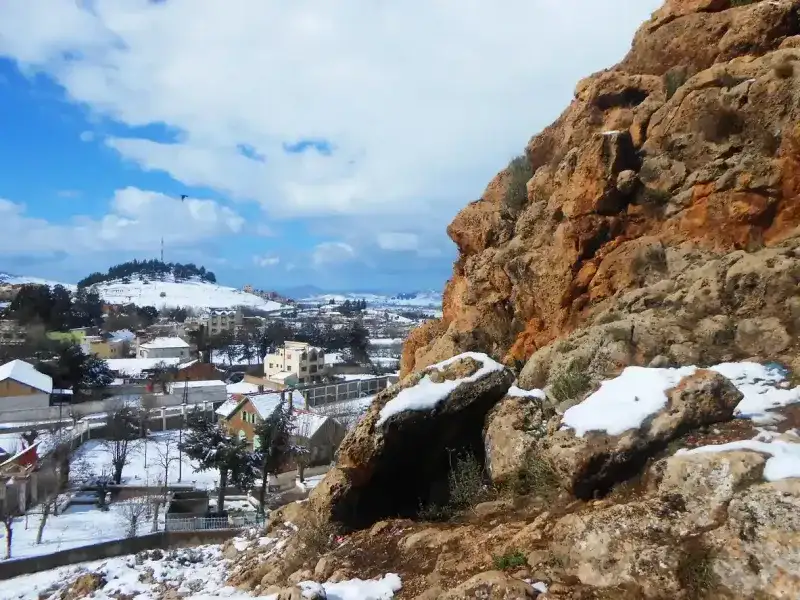
Yes, you’ll find Azrou worth visiting for its peaceful cedar forests, Berber culture, and beautiful Middle Atlas scenery.
You can hike in the Cedar Forest, meet the Barbary macaques, explore the Aïn Vitel spring, and shop for local Berber crafts in the medina.
Essential Experiences That Define Azrou
Azrou offers extraordinary opportunities for travelers seeking to discover authentic Morocco beyond the well-trodden routes. The town's remarkable blend of natural splendor and cultural richness creates unforgettable encounters at every turn.
Experience the Tuesday souk spectacle
Every Tuesday, Azrou transforms into one of the most captivating market gatherings in the Middle Atlas region. Thousands converge from distant villages, creating an electric atmosphere that pulses with traditional commerce. Arrive well before 10 AM to witness the fascinating livestock negotiations involving goats, sheep, and cattle, a ritual unchanged for centuries. The market spreads across an expansive plain 1.5 kilometers north of the center, organized into three distinct zones. Food vendors create aromatic clouds from freshly grilled meats and fish, their tents becoming gathering points for locals and visitors alike. The section closest to town houses exceptional carpet merchants offering quality pieces at surprisingly reasonable prices.
Venture into Cèdre Gouraud's ancient realm
The legendary Cèdre Gouraud forest awaits just 5 kilometers along the Ifrane road, positioned at 1450 meters. This pristine woodland preserves one of North Africa's most significant ecological treasures. The forest bears the name of a magnificent 800-year-old cedar that, though it perished in 2003, continues to stand sentinel above its living companions.
Encounter the remarkable Barbary macaques
These extraordinary primates represent the sole macaque population existing outside Asia. Their expressive faces and intricate social dynamics captivate observers as they navigate their forest domain with remarkable intelligence. Conservation initiatives, including the "Born to be Wild" project, work tirelessly to protect these endangered creatures from poaching while educating communities about their ecological importance.
Discover Middle Atlas hiking trails
The surrounding mountains beckon adventurers with paths that traverse Morocco's most diverse highland terrain. Local Berber guides craft personalized expeditions ranging from single-day explorations to extended mountain journeys, accommodating every fitness level. These trails meander through fragrant cedar groves, thyme-carpeted hillsides, and dramatic rocky overlooks that frame the Atlas landscape in breathtaking panoramas.
Cast lines in pristine mountain waters
Mountain streams surrounding Azrou harbor some of Africa's most prized trout fishing locations, their crystal-clear waters reflecting the surrounding peaks. The fishing season commences each March, with daily permits available for approximately 100 dirhams. Dedicated game wardens maintain the ecological integrity of these mountain waterways.
Sleep beneath the Milky Way
Camping Amazigh, situated 5 kilometers from town at 1450 meters, offers a tranquil orchard setting for celestial observations. This elevated location provides unobstructed views of the Milky Way's spectacular display across the mountain sky. The site also serves as a crucial stopover for migrating stork populations, adding another dimension to its natural appeal.
Make Azrou your gateway to the Middle Atlas. Explore wildlife, hiking, and authentic Amazigh culture with our Morocco tour packages.
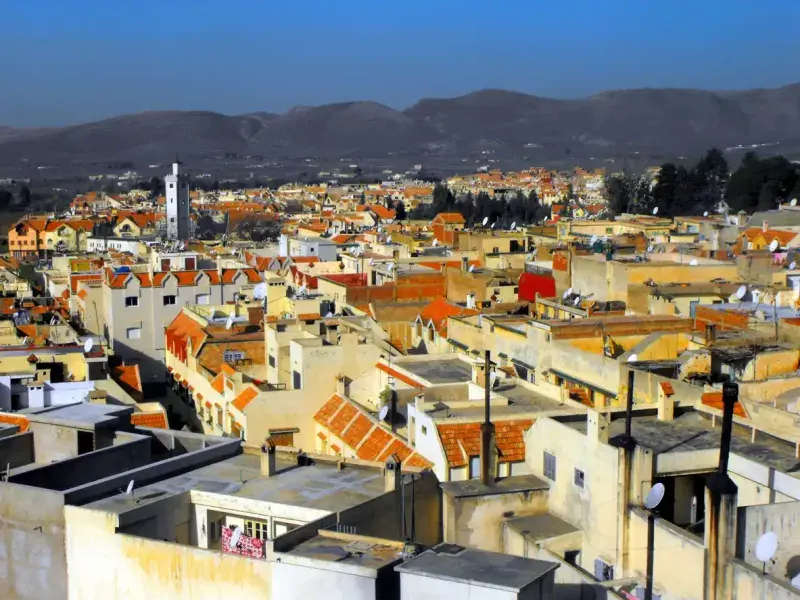
Azrou sits at about 1,250 meters (4,100 ft) above sea level in the Middle Atlas Mountains.
You’ll experience a cool mountain climate, with mild summers and cold, snowy winters.
Historical Treasures and Cultural Heritage
Azrou's cultural landscape extends far beyond its natural splendor, harboring remarkable historical institutions that have shaped Morocco's educational and religious tapestry.
Educational Pioneer: The Berber High School Heritage
A pivotal chapter in Morocco's educational history unfolds within Azrou's boundaries, where the region's inaugural Berber high school opened its doors in 1926 under French colonial direction. Originally christened the Collège d'Azrou, this groundbreaking institution aimed to cultivate Moroccan administrators for colonial service while fostering "a Berber elite steeped in French culture". Following Morocco's independence in 1956, the school transformed, adopting the name Tarik Ibn Ziad School to honor the legendary Amazigh general who pioneered the conquest of Andalusia. Today, this educational milestone stands as compelling evidence of Azrou's instrumental role in nurturing Morocco's future political and military leadership.
Toumliline Monastery: A Beacon of Interfaith Dialogue
Among Azrou's most extraordinary historical chapters lies the story of Toumliline Monastery, established in 1952 when twenty Benedictine monks chose this mountain sanctuary as their spiritual home. Under the benevolent patronage of King Mohammed V, this monastic retreat blossomed into an unprecedented center for interfaith dialogue. During its remarkable decade from 1955 to 1964, the monastery welcomed international assemblies where Muslims, Christians, and Jews from diverse nations gathered for profound spiritual and intellectual exchange. The institution commanded such respect that Prince Moulay Hassan, Morocco's future King Hassan II, personally chaired its organizing committee. Though the monastery ceased operations in 1968 amid rising political tensions, its legacy endured when filmmakers selected the site for the acclaimed movie "Of Gods and Men".
Architectural Legacy: Where European Meets Moroccan
The distinctive architectural character that defines Azrou today represents a fascinating cultural synthesis. These European-influenced structures, crowned with their characteristic red-tiled roofs, emerged from practical necessity to withstand the region's substantial winter snowfall. This architectural fusion creates a unique visual identity that perfectly embodies the town's historical position as a meeting point between diverse cultural traditions.
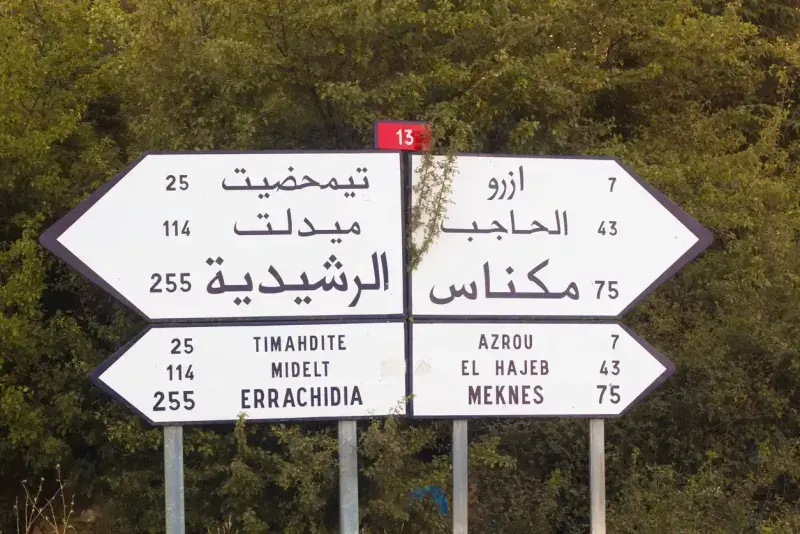
Ifrane, near Azrou, is considered the coldest city in Morocco and often sees snow in winter.
Moroccans are ethnically diverse, and you’ll find a mix of Amazigh (Berber), Arab, and Black African heritage, all contributing to Morocco’s cultural identity.
Customize Your Dream Vacation!
Get in touch with our local experts for an unforgettable journey.
Plan Your TripEssential Wisdom for Your Azrou Journey
Successful exploration of this Middle Atlas sanctuary demands thoughtful preparation. Here lies the practical knowledge that transforms ordinary visits into extraordinary mountain encounters:
Optimal seasonal windows
Azrou's climate oscillates between 27°F and 94°F across the annual cycle. The mountain town reveals its most hospitable character during spring's awakening (April-May) and autumn's golden transition (September-October), when cedar forest exploration becomes truly rewarding. Winter months cloak the landscape in pristine snow, creating an ethereal wonderland for those who appreciate Morocco's rarely witnessed alpine beauty. Summer's warmth (early July through late August) beckons travelers seeking active mountain pursuits.
Accommodation sanctuaries
Le Palais des Cerisiers awaits 2.5 miles beyond the town's heart, featuring an outdoor pool, spa facilities, sauna, and traditional hammam. Those preferring central positioning will find Riad Azrou's patio-equipped rooms ideal, with cycling and hiking excursions readily arranged. Budget-conscious adventurers discover excellent value at Les Jardins d'Azrou, positioned 2.5 miles from the center with commanding mountain panoramas and complimentary WiFi.
Culinary discoveries await
Restaurant Rif presents traditional Moroccan flavors where diners select prime cuts from refrigerated displays. Restaurant ASSAFAE masterfully crafts authentic tagines through patient simmering techniques. Le Rocher D'Atlas Azrou satisfies diverse palates with international cuisines alongside refreshing milkshakes and delicate pastries.
Artisan treasures and mountain crafts
Azrou's textile artisans produce remarkably superior work compared to Morocco's larger urban centers. Tuesday's souk unveils handcrafted treasures: intricate ceramics, vibrant textiles, and ancestral jewelry pieces. Cedar woodcarvings and traditional Berber rugs stand as particularly exceptional finds, each piece narrating the Middle Atlas's cultural legacy through skilled craftsmanship.
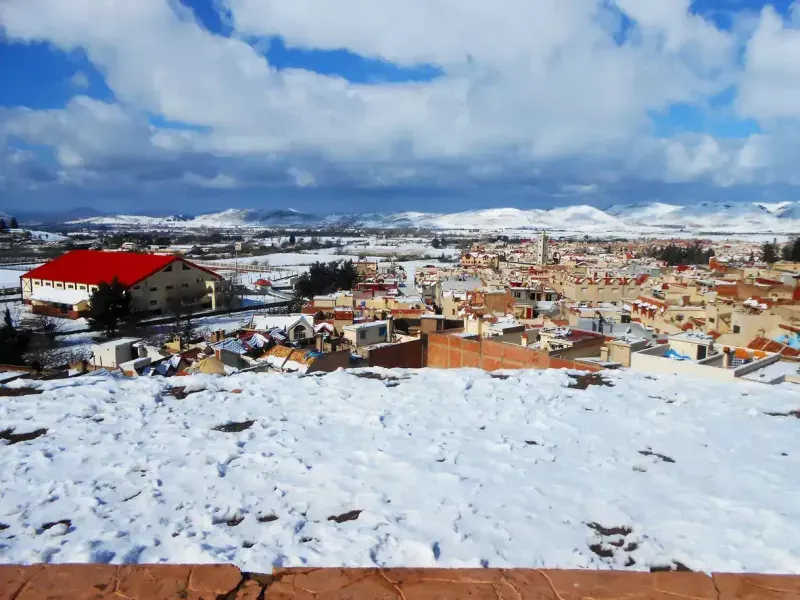
Conclusion
Azrou reveals itself as an extraordinary testament to Morocco's multifaceted character, where ancient geological formations intersect with living cultural traditions. This Middle Atlas sanctuary presents travelers with authentic encounters far removed from conventional tourist circuits, offering discoveries that resonate long after departure.
The Tuesday souk's animated livestock exchanges and masterful carpet artisans provide genuine glimpses into regional commerce, while the Cèdre Gouraud forest delivers profound wildlife encounters with its endangered Barbary macaque inhabitants. These experiences unfold within landscapes where cedar-scented hiking paths traverse thyme-carpeted mountainsides, and pristine alpine streams yield some of Africa's most prized trout fishing opportunities.
Azrou's architectural distinction, those characteristic red-tiled European rooftops rising against Berber stone, creates visual poetry that captures the town's unique position as a cultural confluence. The educational legacy spanning from the pioneering 1926 Berber institution to the remarkable interfaith dialogues once hosted at Toumliline Monastery illuminates Morocco's complex historical tapestry.
Seasonal variations here each offer distinct rewards: spring's moderate climate is perfect for forest exploration, winter's snow-draped vistas create ethereal beauty, and summer's warmth is ideal for extended mountain adventures. The town's accommodations, culinary offerings, and exceptional textile craftsmanship consistently reflect the region's commitment to authentic hospitality.
Most significantly, Azrou's strategic positioning unlocks the broader Middle Atlas realm, serving as your gateway to understanding this remarkable geographical and cultural crossroads.
Our journey through Azrou concludes with recognition of a destination where geological antiquity supports thriving ecosystems, where Berber heritage continues its authentic expression, and where Morocco's highland character reveals its most captivating secrets. This mountain jewel merits thoughtful inclusion in any serious exploration of North Africa's diverse landscapes.
FAQs
Q1. What is the best time to visit Azrou?
The ideal time to visit Azrou is during spring (April-May) or autumn (September-October) when the weather is perfect for exploring the cedar forests. Winter offers a picturesque snowy landscape, while summer (July-August) is suitable for warmer activities.
Q2. What are the must-see attractions in Azrou?
Key attractions include the Cèdre Gouraud forest with its Barbary macaques, the weekly Tuesday souk, hiking trails in the Middle Atlas mountains, and the town's unique European-style architecture with red-tiled roofs.
Q3. Are there opportunities for outdoor activities in Azrou?
Yes, Azrou offers numerous outdoor activities, including hiking in the Middle Atlas, trout fishing in mountain streams, camping under the stars, and observing wildlife like the endangered Barbary macaques in their natural habitat.
Q4. What kind of accommodations are available in Azrou?
Azrou offers a range of accommodations to suit different preferences and budgets. Options include Le Palais des Cerisiers with its spa facilities, centrally-located Riad Azrou, and the budget-friendly Les Jardins d'Azrou with mountain views.
Q5. What local products can I buy as souvenirs in Azrou?
Azrou is known for its high-quality textiles and tailoring. You can find handcrafted souvenirs such as intricately designed ceramics, colorful textiles, traditional jewelry, Berber rugs, and woodcarvings made from local cedar at the weekly souk or local shops.

